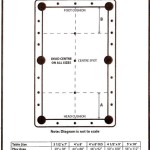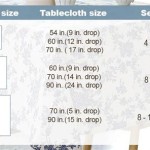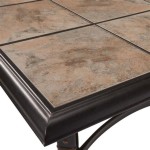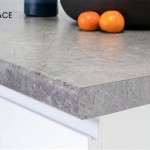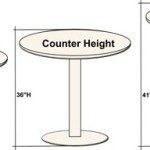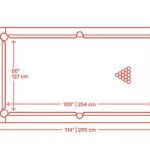Crafting a Dining Table with Leaves: A Comprehensive Guide
The dining table serves as a focal point of the home, a gathering place for meals, conversations, and celebrations. To accommodate varying numbers of guests, a dining table with leaves offers unparalleled versatility. These leaves, sections that can be added or removed, allow the table to expand and contract according to specific needs. Building such a table necessitates careful planning, precise execution, and a thorough understanding of woodworking principles. This article will detail the process of constructing a dining table with leaves, outlining the key considerations and techniques involved.
The initial stage of any woodworking project involves careful design and material selection. For a dining table, the desired aesthetic, size, and durability are paramount. Hardwoods like maple, oak, cherry, and walnut are popular choices for their strength and visual appeal. Softwoods, such as pine, may be used, but they typically require a more robust finish and may be more susceptible to dents and scratches. The design should incorporate the mechanism for leaf storage and deployment, whether it's a butterfly leaf, drop-leaf, or a table with separate, storable leaves. Detailed drawings and cut lists are essential for ensuring accurate material acquisition and minimizing waste.
Understanding Leaf Mechanisms and Joinery
The heart of a dining table with leaves lies in the mechanism that allows for expansion and contraction. Several options exist, each with its own advantages and disadvantages. Butterfly leaf tables feature leaves that are hinged and stored beneath the tabletop, flipping up and into place when needed. Drop-leaf tables, typically smaller in size, have leaves that are hinged to the sides and can be supported by brackets or folding legs. Tables with separate leaves require storing the leaves independently when not in use, but offer the greatest flexibility in terms of size and expansion options. Choosing the appropriate mechanism is critical to the overall functionality and ease of use of the table.
Joinery is another crucial aspect of building a durable and aesthetically pleasing dining table. The tabletop, legs, and frame must be securely connected using techniques that can withstand the stresses of regular use. Mortise and tenon joints, dovetail joints, and dowel joints are all common choices for table construction. Mortise and tenon joints offer exceptional strength, while dovetail joints provide a mechanical interlock that resists pulling forces. Dowel joints are simpler to execute but may require reinforcement for heavier tables. The selection of joinery techniques should be based on the specific design, the materials used, and the desired level of craftsmanship.
For the tabletop itself, various construction methods can be employed. Solid wood tabletops offer a rich, natural appearance, but are prone to expansion and contraction with changes in humidity. This can lead to warping or cracking if not properly accounted for. Engineered wood products, such as plywood or MDF with a veneer, offer greater stability and resistance to moisture. Constructing a frame-and-panel tabletop can also mitigate the effects of wood movement, allowing the solid wood panel to float within a rigid frame. The edges of the tabletop can be finished with solid wood edging to provide a more durable and appealing surface.
The leaves themselves must be precisely sized and shaped to fit seamlessly into the table. Careful attention must be paid to the alignment of grain patterns and the matching of color tones. The edges of the leaves should be profiled to match the edges of the main tabletop, creating a consistent and visually appealing surface when the table is fully extended. Hardware, such as table slides and locking mechanisms, must be installed accurately to ensure smooth operation and secure attachment of the leaves. High-quality hardware is essential for long-term reliability and ease of use.
The Process of Constructing the Table Frame and Legs
The frame of the dining table provides essential support for the tabletop and legs. It is typically constructed from solid wood and is joined together using mortise and tenon joints, dowel joints, or other suitable joinery techniques. The dimensions of the frame should be carefully calculated to ensure adequate support for the tabletop and to accommodate the leaf mechanism. Cross members, such as aprons, can be added to the frame to increase its rigidity and prevent sagging. These aprons can also be decorative elements, adding visual interest to the table.
The legs of the dining table are a critical structural element, bearing the weight of the entire table and its contents. They can be straight, tapered, or turned, depending on the desired aesthetic. The legs should be securely attached to the frame using mortise and tenon joints, metal brackets, or other robust fastening methods. The angle and placement of the legs can significantly affect the stability and appearance of the table. Splaying the legs outward slightly can increase stability, while placing them closer to the corners can create a more modern look. The height of the legs should be carefully considered to ensure comfortable seating for diners.
When constructing the frame, it is important to ensure that all parts are square and level. Any inaccuracies in the frame will be amplified when the tabletop is attached, leading to a wobbly or unstable table. Clamps, squares, and levels should be used throughout the construction process to ensure accuracy. Dry-fitting the frame before applying glue is also a good practice, allowing for any necessary adjustments to be made before the joints are permanently secured. The frame should be sanded smooth and finished to match the tabletop.
The attachment of the legs to the frame requires careful alignment and secure fastening. Mortise and tenon joints provide the strongest and most durable connection, but they require precise cutting and fitting. Metal brackets can be used as an alternative, but they should be of sufficient strength and quality to support the weight of the table. The legs should be aligned flush with the frame and secured with screws or bolts. Periodic tightening of the fasteners may be necessary to maintain the stability of the table over time.
Finishing, Assembly, and Maintenance Considerations
Finishing is a crucial step in protecting the wood and enhancing its natural beauty. The choice of finish depends on the type of wood, the desired aesthetic, and the level of protection required. Oil-based finishes, such as varnish or polyurethane, offer excellent durability and resistance to water and scratches. Water-based finishes are more environmentally friendly and dry faster, but may not be as durable. Wax finishes provide a soft, natural sheen but require regular maintenance.
Before applying the finish, the wood should be sanded smooth and free of any imperfections. Multiple coats of finish should be applied, with light sanding between coats to create a smooth and even surface. The finish should be allowed to dry completely before the table is assembled. Assembly involves attaching the tabletop to the frame, installing the leaf mechanism, and adding any necessary hardware. Table slides should be lubricated to ensure smooth operation, and locking mechanisms should be adjusted for proper engagement.
Maintaining a dining table with leaves requires regular cleaning and occasional refinishing. Spills should be wiped up immediately to prevent staining, and the table should be protected from excessive heat and humidity. Avoid using abrasive cleaners or harsh chemicals, as these can damage the finish. Scratches and dings can be repaired with touch-up stain or varnish. Over time, the finish may wear away, requiring a complete refinishing. Refinishing involves stripping the old finish, sanding the wood smooth, and applying a new finish.
The longevity of a dining table with leaves depends on the quality of materials, the craftsmanship, and the level of care it receives. By following the principles and techniques described in this article, one can construct a durable, functional, and aesthetically pleasing dining table that will provide years of enjoyment. The investment in time and effort will be rewarded with a beautiful piece of furniture that will become a cherished part of the home.
Specific design choices, wood characteristics, and finishing preferences will ultimately shape the final product. Consulting woodworking resources and experienced craftspeople can provide valuable insights and guidance throughout the building process. The creation of a dining table with leaves is a challenging but rewarding endeavor, resulting in a unique and personalized piece of furniture.

Dining Table With Leaves Build Plans Houseful Of Handmade

Diy Dining Table With Leaves Houseful Of Handmade

Dining Table With Leaves Build Plans Houseful Of Handmade

Diy Dining Table With Leaves Houseful Of Handmade

Extension Dining Table Finewoodworking

Diy Dining Table With Leaves Houseful Of Handmade

Dining Table With Leaves Build Plans Houseful Of Handmade

Diy Farmhouse Table With Extension Leaves Plans Sweet Tooth Life

Diy Dining Table With Leaves Houseful Of Handmade

How To Build Farmhouse Table With Extension Leaf Dining Room Rustic



